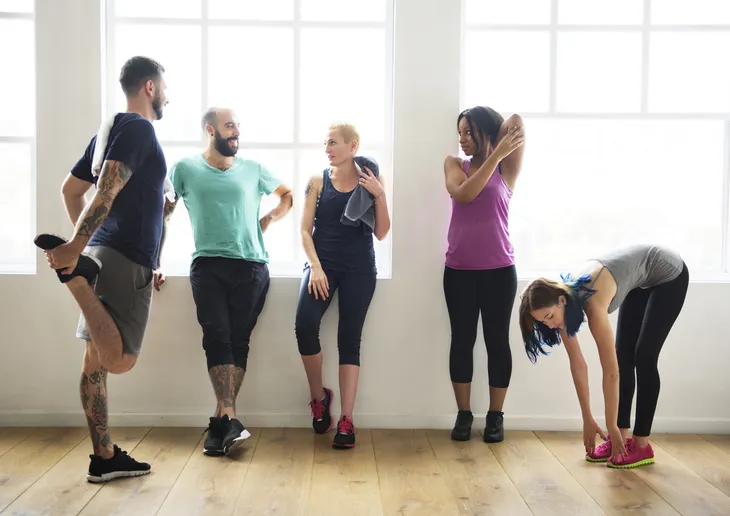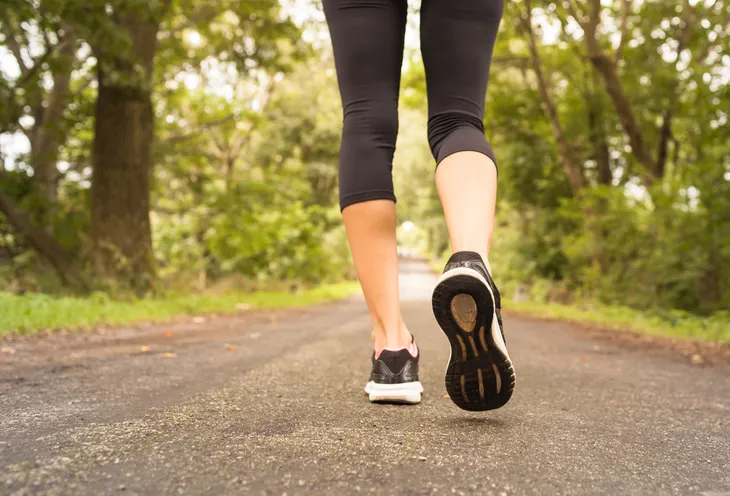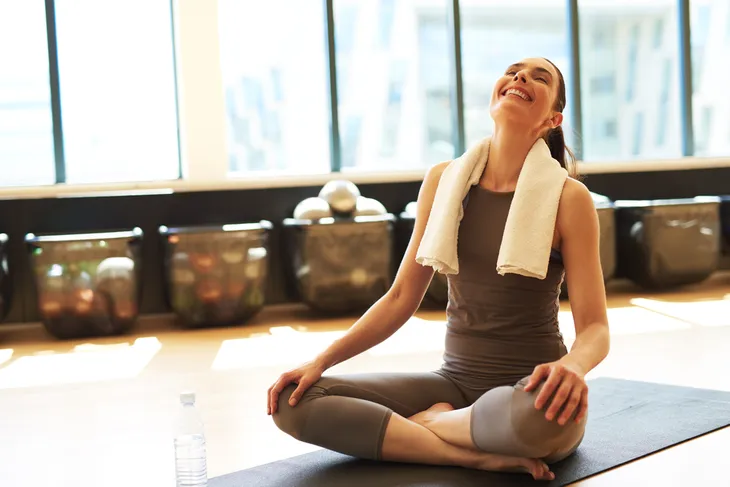The North American preoccupation with health and wellness continues to grow and so does the economy that supports it. From nutritional supplements and organics to techno-workouts and sport clothing, the industry of diet, exercise, and health is a multi-billion dollar cash cow. With healthy food and exercises classes costing us more, how does one achieve a higher level of well-being when money is scarce?
The good news is health and wellness doesn’t discriminate and is available for all levels of income. The following suggestions are for anyone interested in strengthening one’s wellbeing—without weakening the wallet…
1. Physical Activity
The only considerations needed to add physical activity into our daily schedule are a safe place to walk and the time to do it. Although research has determined that our environment plays a role in our physical activity habits (i.e. lack of safe walking paths reduce walking behavior), walking is still the “gold standard” of exercise. Plus, it’s free, it can be done anywhere, and we don’t have to wear the latest fitness garb to do it.
What’s more, we don’t have to dedicate 30-minutes to walking; we can divide our time up during the day. Physical activity is accumulative and has the same positive benefits if we walk 10 minutes three times a day or 30-minutes all at once. Commit to walking a few days per week, walk at a comfortable pace, and add more days, more minutes, or more intensity as you progress.
2. Gratitude
Positive psychology has demonstrated a link between gratefulness and overall health. Robert Emmons, and his colleagues at the University of California, at Davis, examined the results of daily record keeping and gratitude. They found those that recorded up to 5 things to be grateful for also reported a higher level of overall positive affect coupled with feeling optimistic about the future (as opposed to those that beefed about life’s irritations). In addition to more positive feelings about life, Emmons found the practice of daily gratitude enhanced overall sleep habits.
So how does the average “Negative Nelly” make a change towards more positive thoughts? The good news is this choice is ours and free of charge. We can begin to make this change at our own pace. The bad news is it may take a while and is something that demands our attention if we are going to see that glass half full. By being mindful of our thoughts we can slowly replace them by listing all the good things in our lives…even if it is as simple as having eyes to read this article.
3. Writing
Oscar Wilde once said, “I never travel without my dairy. One should always have something sensational to read on the train.” Throughout history, great thinkers and leaders have maintained journals. According to James Pennebaker, a researcher from University of Texas, at Austin, writing down our thoughts and feelings can positively impact our health and overall quality of life. He found that writing improved immune system functioning along with the reduction of stress.
Writing down our thoughts can help us untangle how we may be feeling; it will increase our self-awareness, help with problem solving, and alleviate or manage stress. The equipment needed is only a piece of paper and a pen. The hardest part is finding the time to sit and reflect without thinking of what’s for dinner or the mountain of emails we need to respond to. Start by placing the pen on the page and write whatever comes until the words start to flow. It may be all one needs to enhance overall health and quality of life.
4. Meditation
No time to exercise? Can’t be bothered to write your feelings down? Mediation may be what the doctor ordered and the benefits may be seen in a mere 5 minutes! The good news is that meditation is free; the bad news is it takes some time to hone the skill. This is especially true if we can’t stop thinking about our “To Do” list or picking up the kids from school.
Once we are able to focus on the present, focus only our breathing, and calm our minds, we will benefit from the emotional and physical health effects of this ancient practice. From reducing negative emotions and gaining a most positive perspective to managing chronic anxiety, pain, and sleep problems, meditation may be the panacea of good health.
5. Creativity
There is an interesting trend brewing and it includes a coloring book and pack of pencil crayons. No, this isn’t for the kids, adult coloring books are all the rage and based upon the notion that creativity is a great stress management tool. Exciting research published in the American Journal of Public Health reviewed over 100 studies examining the creative arts and health. The results showed improvements in both mental and physical health including decreased levels of depression and anxiety while increasing the body’s immune system function.
No money for a coloring book and pencil crayons? Grab a piece of paper and start doodling. Create something from nature (leaves, sticks, rocks). Creativity isn’t so much about the products but about the process. When we embrace our creative side we are enhancing our overall quality of life (just as we would by taking a walk or eating a carrot).
6. Animals
Animals are amazing health coaches and dogs can be the best personal trainers. Research from the University of Victoria has shown that dog owners walk more than those that are “dogless”. Although most of us understand the physical and emotional benefits of owning a pet, the science is just starting to understand the human-animal connection. Through this research, the American Heart Association has suggested pets may reduce the risk of heart disease.
People who own pets enjoy a lower level of depression, anxiety, and stress while enjoying a higher rate of pleasure hormones like serotonin and dopamine that help us to relax. Not a pet owner? One can find the same benefits by visiting friends with pets or volunteering at the animal shelter as a caregiver or dog walker. Keep in mind, while it’s never a good idea to get a pet unless the proper care and attention can be given to it, animal therapy can be ours without the expense by helping others care for beloved fur babies.
7. Social connection
Organizing a social group or chatting with a friend on the street corner are examples of social connection. A ten year study of 1,500 older adults was conducted at the center for Aging Studies at Flinders University. The findings demonstrated that those who enjoyed a large network of friends outlived those with the least social connection by 22 percent.
The body of research that supports a positive link between social support and health is large. One study found that women who had a large support group while dealing with cancer had a better result after treatment than those that were less connected. In a nutshell, social support reduces our stress and increases our health and quality of life. Increasing our social connection is free of charge and the return on investment is priceless!
8. Laughter
The trick with laughter is it can’t be forced but when it comes organically it can connect people and diffuse stress, anger, and other negative emotions. An examination of laughter, by Dr. Robert Povine, a neuroscientist, concluded that laughter influences intimacy with others. In fact, he found that the amount of laughter in women indicated the health of their relationships. Laughter can increase the good hormones and decrease the bad. It can decrease heart rate and blood pressure while increasing the strength of the immune system.
As we move from youth to middle age, the inclination to laugh or play decreases significantly. The good news is we can change this and make an effort to laugh more often. Through funny movies, hanging with funny people, or whatever we need to do to seek it out, adding laughter to one’s healthy tool box is another free way to achieve a great level of emotional and physical health (and that’s something to laugh at).
9. Spending More Time Outside
Although it may be a little more challenging to enjoy nature in the big city, one may be able to get the same benefits walking in a city park as walking the trials in the woods. Studies have suggested being outdoors enhances both physical and emotional wellbeing. Through exposure to sunlight (and the vitamin D that results) and fresh air to the cognitive benefits, choosing to walk outdoors, if possible, will influence health more than the treadmill.
Research from the Peninsula College of Medicine and Dentistry reviewed studies comparing outdoor with indoor activity. The findings suggested that outdoor physical activity has a positive influence on depression, cognitive functioning, anxiety, and stress. The idea isn’t driving for miles to find a patch of grass but to just be outside. It’s free, it’s there, and we don’t have to worry about buying the special gear to enjoy it.
10. Quality Sleep
Although sleep is free, it may be one of the most challenging “complimentary” wellness products we have at our disposal. The good news is getting a deep, restful sleep will brighten up anyone’s perspective and provide more energy and feelings of well-being than any other strategy. The bad news is if we are under chronic stress or hormonally challenged a good night’s sleep may be the hardest thing to achieve.
The first step to making a positive change to sleep habits is taking the time to sleep. Schedule bedtime an hour earlier or turn off the screen 30 to 45 minutes before bedtime. Perhaps that is all that is needed to reap the benefits of greater energy, positive moods, and better quality of life.
11. Nutrition
Although obtaining healthy food is challenging depending upon the availability of fresh fruits and vegetables, for many it is a matter of choice. Purchasing less processed foods and more fresh produce may not add more dollars to the bill as many believe. A diet lower in sugar may be one way to feel more energetic and enjoy a higher quality of life. Although eliminating sugar may not be realistic, cutting down on the processed foods that have a higher amounts of sugar may make a huge difference to physical and mental health.
Another step may include finding one, easy recipe that motivates more home cooked meals (and whole foods) to the diet. One pot cooking is all the rage and recipes may include foods most people have in the kitchen. Avoid recipes that have a list of ingredients or steps and include foods you can’t pronounce. It may not make a difference for the foodie, but for the novice cook it may overwhelm and intimidate.
12. Stop Stressing About Health
Carcinophobia is defined as the fear of cancer while orthorexia is defined as an unhealthy focus on healthy eating. Ironically, what we are learning through health research may be bad for our health (should we decide to stress about it). Recently, the World Health Organization (WHO) announced their stance on processed and red meats stating the risk of certain cancers will increase if we eat these products more often than not.
Although the message of balance and moderation isn’t that sexy—it can be applied to every new health and fitness announcement past, present, and future. Eating a hot dog once in a while or red meat 1 day a week will not influence cancer rates. Perspective is what healthy practice needs more of (not scare tactics). Moderate exercise coupled with a diet full of veggies and whole foods is great, but we can also enjoy the odd cronut once in a while without the expectation of a cancer scare. The stress alone will kill us…not the cronut.















